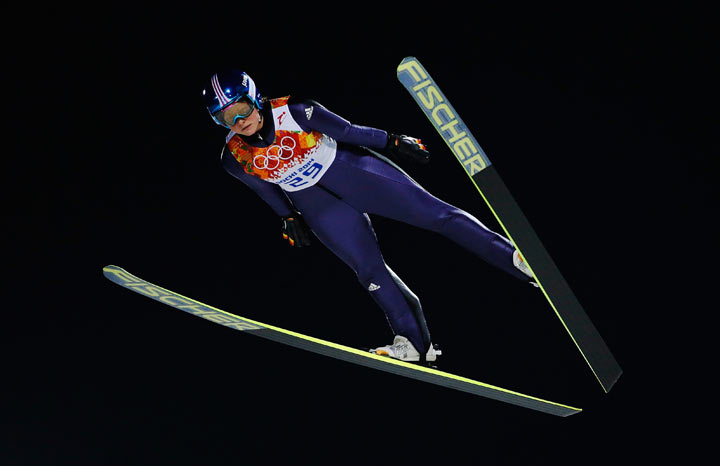Watch the video above: Ready to soar

It’s an event 90 years in the making. For the first time in Olympic competition, women competed in ski jumping.
On Tuesday, jumpers from around the world soared at the RusSki Gorki Jumping Center.
Ski jumping was introduced for men in the first Winter Olympics in 1924, held in Chamonix, France.
Two Canadian ski jumpers competed in Sochi on Tuesday: Atsuko Tanaka and Taylor Henrich, finishing 12th and 13th, respectively.
At 22, Tanaka is Canada’s most experienced female ski jumper at Sochi, and is coming off her best World Cup finish (4th).
Alexandra Pretorius was named to Team Canada but was forced to withdraw after re-injuring her knee during a pre-Olympic training camp.
German ski jumper Carina Vogt won the gold. Daniela Iraschko-Stolz, from Austria, took the silver medal and France’s Coline Mattel won bronze. Japan’s 17-year-old Sara Takanashi – who was a favourite to medal – placed fourth.
READ MORE: Full medal count from the Sochi Olympics

Get breaking National news
Regardless of the final results, all the athletes were a part of history on Tuesday.
“Having it actually be in the Olympic Games now is really exciting and it’s actually unbelievable because we’ve been waiting for this for so long and we fought for it,” said Tanaka.
Women ski jumpers have been lobbying for inclusion in every Winter Games since 1998, each time their efforts turned down by the International Olympic Committee (IOC).
In 1991, the IOC said that all new sports added to the official Olympic program would be open to both men and women – but that rule didn’t apply to sports that already existed.
The reasons for not including the women’s ski jumping event included heavily debated claims that women’s bodies are too fragile to handle the sport’s rough landings and that there weren’t enough female ski jumpers competing worldwide to include it in the Games.
In 2005, the International Ski Federation’s then president Gian Franco Kasper (and IOC member) said ski jumping “seems not to be appropriate for ladies from a medical point of view.”
Others put it more bluntly – claiming that a woman could damage her reproductive organs due to repeated ski-jump landings.
In 2009, a group of 15 female ski jumpers from five countries launched a lawsuit against the Vancouver 2010 Organizing Committee (VANOC), pushing for inclusion in the 2010 Vancouver Winter Olympics.
The case went to B.C.’s Supreme Court where lawyers for the plaintiffs asked the court to grant a declaration that if VANOC planned and staged ski jumping events for men they must grant equal rights for women, arguing that failure to do so would be a direct violation of Section 15 of the Canadian Charter of Rights and Freedoms.
In June 2009, the judge decided against the ski jumpers, saying the admitted inequality fell under the responsibility of the IOC, not the Charter.
After 87 years of men’s ski jumping at the Olympics, the IOC said in 2011 that women’s ski jumping would be included in the official Olympic program for Sochi 2014.
Tuesday’s event has been regarded as a victory in the eyes of many, but the women’s competition is still not on equal footing with the men.
Women will only be jumping in the “normal hill competition” – the smaller of the two hills in Olympic competition – whereas the men will compete in normal hill, large hill and team competition.
COMPLETE COVERAGE: Sochi 2014 Winter Olympics



Comments